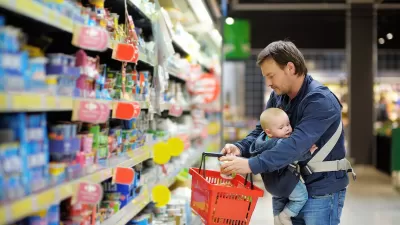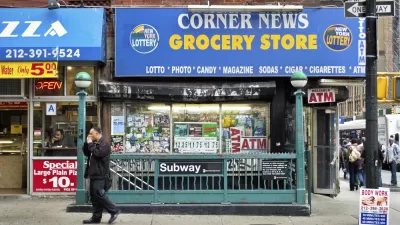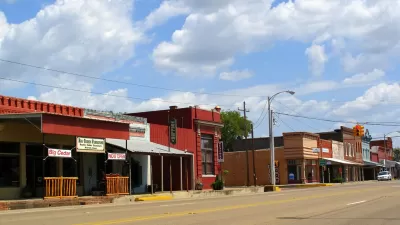What does the impending demise of the Fresh & Easy grocery chain mean for food deserts? Hannah Burton Laurison and Christine Fry look at how small-format grocery stores can still succeed where Fresh & Easy failed.
Reports that the British supermarket giant Tesco is getting ready to close its U.S. grocery chain Fresh & Easy "came as a blow" to many nutrition advocates, Hannah Burton Laurison and Christine Fry write. By opening small-footprint food stores in neighborhoods that other grocery chains have largely ignored, the company made fresh produce and other healthy foods available in neighborhoods with few options.
But the failure of Fresh & Easy doesn't mean healthy food stores "can’t make enough of a profit to survive in these neighborhoods," the authors write. They note that a number of other major retailers -- including WalMart, Target, and Safeway -- are now testing out small-format grocery stores in low-income communities, and lessons from Fresh & Easy’s experience will be critical to seeing these outlets succeed.
Supermarkets have become "nothing less than huge" since the post World War II suburbanization of America, Laurison and Fry write, making it hard for inner-city markets to compete. But as the industry continues to try out small-format discount grocery stores, tailoring their offerings to community needs may be one key to making sure these food outlets thrive.
"While Fresh & Easy may not have proved profitable enough for Tesco, small grocery stores offering fresh foods are still cropping up in underserved neighborhoods around the country," the authors write – "and these successors should take a lesson from local grocers if they expect to truly succeed."
FULL STORY: Fresh & Easy’s Demise: What Does it Mean for Food Access in California?

Trump Administration Could Effectively End Housing Voucher Program
Federal officials are eyeing major cuts to the Section 8 program that helps millions of low-income households pay rent.

Planetizen Federal Action Tracker
A weekly monitor of how Trump’s orders and actions are impacting planners and planning in America.

The 120 Year Old Tiny Home Villages That Sheltered San Francisco’s Earthquake Refugees
More than a century ago, San Francisco mobilized to house thousands of residents displaced by the 1906 earthquake. Could their strategy offer a model for the present?

Austin Launches $2M Homelessness Prevention Fund
A new grant program from the city’s Homeless Strategy Office will fund rental assistance and supportive services.

Alabama School Forestry Initiative Brings Trees to Schoolyards
Trees can improve physical and mental health for students and commnity members.

NYC Outdoor Dining Could Get a Re-Do
The city council is considering making the al fresco dining program year-round to address cost concerns from small businesses.
Urban Design for Planners 1: Software Tools
This six-course series explores essential urban design concepts using open source software and equips planners with the tools they need to participate fully in the urban design process.
Planning for Universal Design
Learn the tools for implementing Universal Design in planning regulations.
Ada County Highway District
Clanton & Associates, Inc.
Jessamine County Fiscal Court
Institute for Housing and Urban Development Studies (IHS)
City of Grandview
Harvard GSD Executive Education
Toledo-Lucas County Plan Commissions
Salt Lake City
NYU Wagner Graduate School of Public Service





























